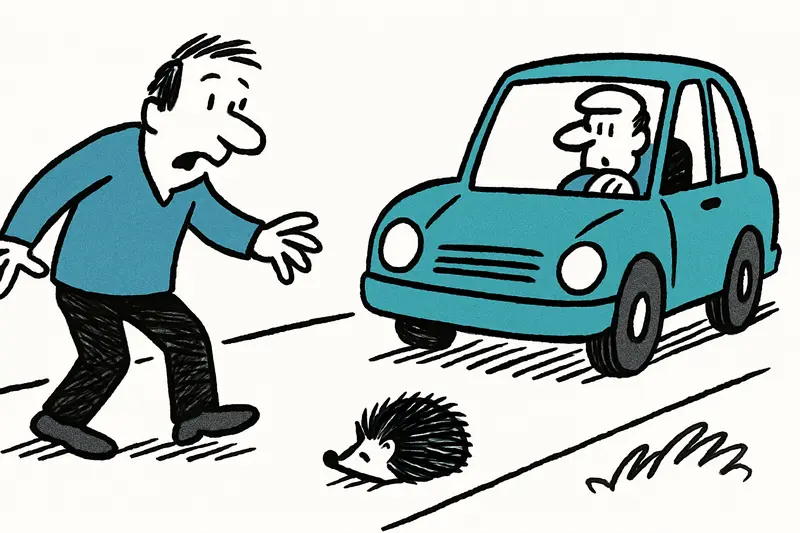From hedgehogs to martens: A monitoring project records significantly more wildlife accidents on the Balearics—and the island continues on a stormy course.
More dead animals on the roadside: Why this year there are unusually many accidents
\nI went last weekend along the rural road toward Sineu and once again saw a sad scene: a hedgehog, small and curled up at the roadside, headlights still in the rear-view mirror. Such images have become everyday here—and the numbers confirm the feeling.
\nThe Observatori d’Atropellaments de Fauna a les Illes Balears (OAFIB), coordinated by the Universitat de les Illes Balears and the Biodibal biodiversity center, registered for January to September this year 1,496 reported wildlife accidents on the Balearic Islands. That is a noticeable increase compared to the previous year.
\nMallorca is especially affected
\nIn September there were a total of 171 cases reported—and 136 of them occurred on Mallorca. Ibiza recorded 20, Menorca 14, Formentera a single case. Most commonly hit: the hedgehog (76 reports), the stone marten (19) and the rabbit (12). But the spectrum is broad: over the years the project has recorded 118 species.
\nThe accident hotspots are not surprising: the highway toward Manacor, the Palma–Sa Pobla route and the connecting roads around Sineu. Those traveling there in the evening know how quickly an animal can cross the road unexpectedly.
\nMore reports – more insights
\nAn important point: the researchers say a portion of the rise is because more people report observations. Volunteers, walkers, farmers and commuters send tips — thereby making the recording more reliable. Still, the number remains alarming.
\nSince record-keeping began in 2004, OAFIB has documented around 5,242 run-overs. The figures show how much roads cut through the habitat of many animals.
\nA look across the border
\nThe problem is not only local: in Germany, insurers regulated in 2024 around 276,000 wildlife accidents with total damage of over 1.1 billion euros — roughly 4,100 euros damage per case. On Mallorca the economic damage is usually smaller, but the consequences for biodiversity are real.
\nWhat helps? More attention when driving, especially at dusk and in fog. If you see something: report it. And in the long term there is a need for measures such as better signage, speed adjustments at known danger points, or animal overpasses and underpasses — yes, that costs, but it saves lives.
\nI will drive slower next time when the road near Sineu becomes tight. And if you notice something at the roadside: report it to OAFIB. Small effort, big impact – at least for the next animal that still has to cross the road.
Similar News

More Evictions on the Balearic Islands: Tenants Hit Hardest
In the second quarter of 2025, the number of evictions on the Balearic Islands rose. Rental apartments are especially af...

Palma: Two Women Arrested on Suspicion of Exploiting Restaurant Workers
Police raid in Palma: Two women are in custody after employees allegedly worked without contracts and were paid only one...

Es Carnatge Is Being Restored: Palma Invests Millions in the Natural Area Near the Airport
Palma has approved the first phase of upgrading Es Carnatge: paths, lighting, and ecological measures are intended to ma...

Damp Autumn Afternoon in Sóller: Umbrellas, Oranges, and Tram Noises
Sóller shows its wet side today: light rain, mild temperatures, and the unmistakable scent of orange trees - practical t...

15-year-old girl found dead in Palma - investigations underway
In Son Oliva, in the early hours of the morning, a 15-year-old girl was found lifeless in an apartment. Police have open...
